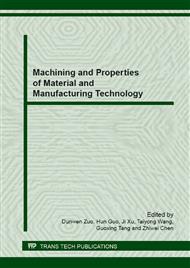[1]
C. Wolden, S. Mitra, K.K. Gleason, Radiative heat transfer in hot-filament chemical vapor deposition diamond reactors, Applied Physics, 72(1992) (8): 3750-3758.
DOI: 10.1063/1.352295
Google Scholar
[2]
D.G. Goodwin, G.G. Gavillet, Numerical modeling of the filament-assisted diamond growth environment, Applied Physics, 68(1990) (12): 6393-6400.
DOI: 10.1063/1.346858
Google Scholar
[3]
J. MA, J. SHE, Research on Cyber Security Segregation for Industrial Control Systems, JDCTA: International Journal of Digital Content Technology and its Applications, 5(2011) (8) 9-15.
DOI: 10.4156/jdcta.vol5.issue8.2
Google Scholar
[4]
W. C. Oliver, G. M. Pharr, Improved technique for determining hardness and elastic modulus using load and displacement sensing indentation experiments, Journal of Materials Research, 7(1992): 1564-1580.
DOI: 10.1557/jmr.1992.1564
Google Scholar
[5]
X. M. Li, J. D. Wang, D. R. Chen, Mechanical Properties of Diamond Thin Films Characterized by Nano-indentation Method, Journal of the Chinese Ceramic Society, 33(2005)(12): 1539-1543.
Google Scholar
[6]
S. E. Coe, R. S. Sussmann, Optical, thermal and mechanical properties of CVD diamond, Diamond and Related Materials, 9(2000): 1726-1729.
DOI: 10.1016/s0925-9635(00)00298-3
Google Scholar
[7]
G. M. Pharr, W. C. Oliver, Brotzen, On the generality of relationship among contact stiffness, contact area, and elastic modulus during indentation testing, Journal of Materials Research, 7(1992) (3): 613-617.
DOI: 10.1557/jmr.1992.0613
Google Scholar
[8]
G. M. Pharr, Measurement of mechanical propriety by ultra-low load indention, Materials Science Engineering A, 253(1998)151-159.
DOI: 10.1016/s0921-5093(98)00724-2
Google Scholar
[9]
W. C. OLIVER, G. M. PHARR, Improved technique for determining hardness and elastic modulus using load and displacement sensing indentation experiments, Journal of Materials Research , 7(1992): 1564-1580.
DOI: 10.1557/jmr.1992.1564
Google Scholar
[10]
T. H. Zhang, Y. M. Yang, Nano-hardness Techniques and Its Applications in Mechanical Property Measurements for Surface Engineering, China Mechanical Engineering, 13(2002)24: 2148-2151.
Google Scholar
[11]
Q.F. Su, Y. B. Xia, L.J. Wang, Optical and electrical properties of different oriented CVD diamond films, Applied Surface Science, 252(2006): 8239–8242.
DOI: 10.1016/j.apsusc.2005.10.048
Google Scholar


